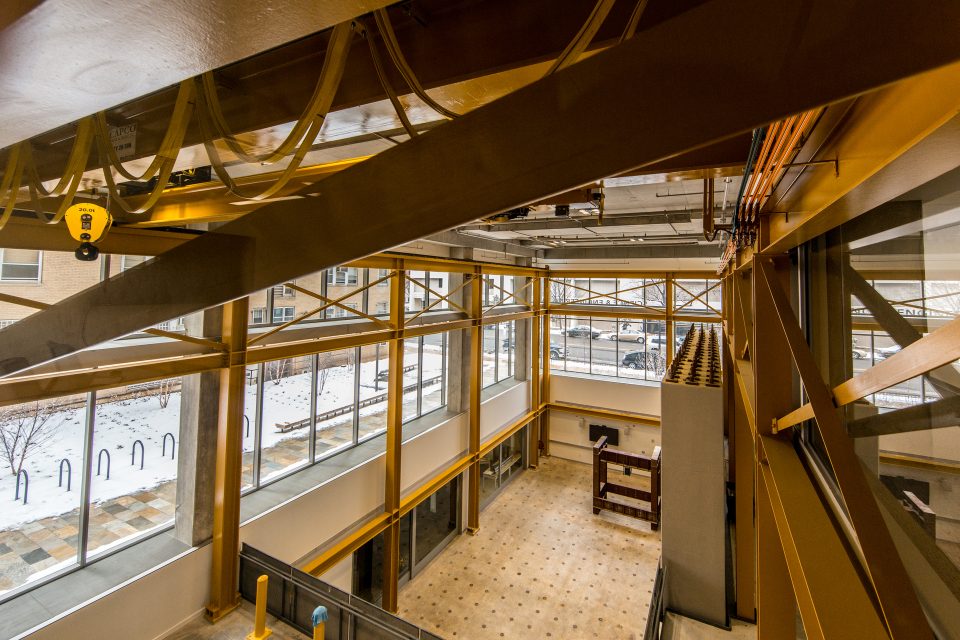The George Washington University's state-of-the-art Science and Engineering Hall (SEH) is home to a wealth of knowledge and resources for students and faculty alike. One of the most integral parts of the building is its many research facilities, such as the high bay. Dr. Sameh Badie, a professor in the Department of Civil and Environmental Engineering, is utilizing the high bay to its fullest potential in his current research project. We sat down with Dr. Badie to find out more about the project:
Could you describe the project that you are currently undertaking in the high bay?
This test is part of the experimental activities of NCHRP 12-96 "Simplified Full-Depth Precast Concrete Deck Panel Systems," sponsored by the National Academy of Science.
The test specimen shown in the video clip is made of a precast reinforced concrete panels that are supported by 40-foot long steel beams. The precast panels and the steel beam are connected with six groups of steel studs welded to the steel beam and embedded at the joints between the panels. The spacing between the stud groups is 6 feet, which is 150 percent of the maximum spacing allowed by the AASHTO LRFD Bridge Design Specifications. The joints between the precast panels is filled with Ultra High Performance Concrete that delivers 25,000 pounds per square inch. A discrete non-continuous built up (i.e. haunch) system between the panels and the steel beam is used.
The video clip (above) shows the beam in place and the loading portal frame being moved to the center of the beam. The portal frame is equipped with a hydraulic actuator that will be used to apply four to six million cycles of repeated load on the beam. The repeated load simulates the effect of moving traffic on real bridges.
This test requires a strong floor, a portal frame, a cyclic, an overhead crane, a data acquisition system and static hydraulic load system. Fortunately, the high bay at GW is equipped with all these items and more.
- Although the high bay is not directly open to the loading dock, it is provided with a unique entrance (mezzanine level) that allows heavy and long trucks to get inside the building and load/unload material and specimens.
- The high bay is equipped with a 20-tons (40,000 pounds) head crane that allows moving and building heavy specimens.
- The high bay is equipped with a strong floor that can resist up to a million pounds of load.
- The high bay is equipped with a 25-ft high strong wall that can resist up to 300-kip lateral load.
- The high bay is equipped with two loading portal frames rated for 300 kips.
- The high bay is equipped with state-of-the-art cyclic/static hydraulic loading system.
- The high bay is equipped with two scissor lifts.
- The high bay is equipped a state-of-the-art data acquisition system to collect data from a wide variety types of instrumentation.


Thanks for sharing your post.